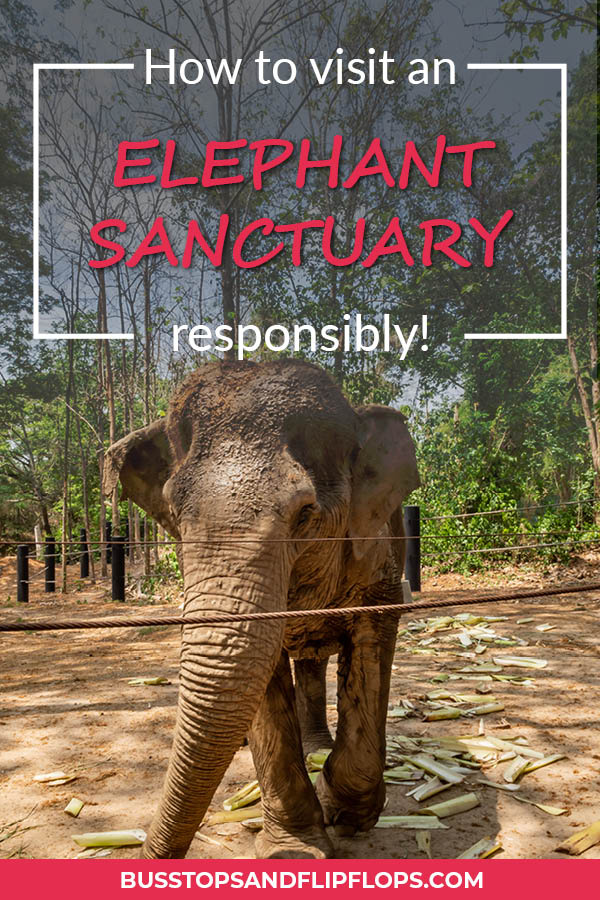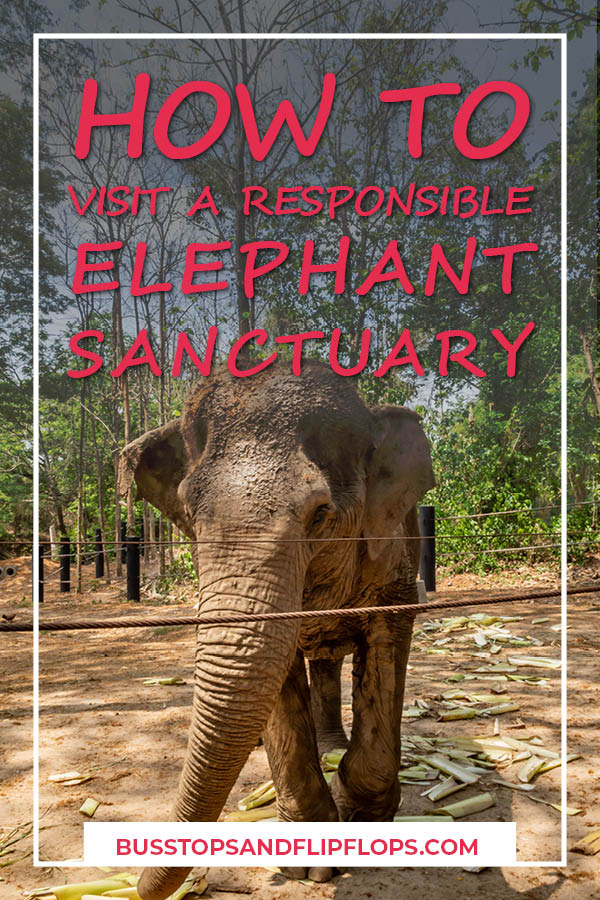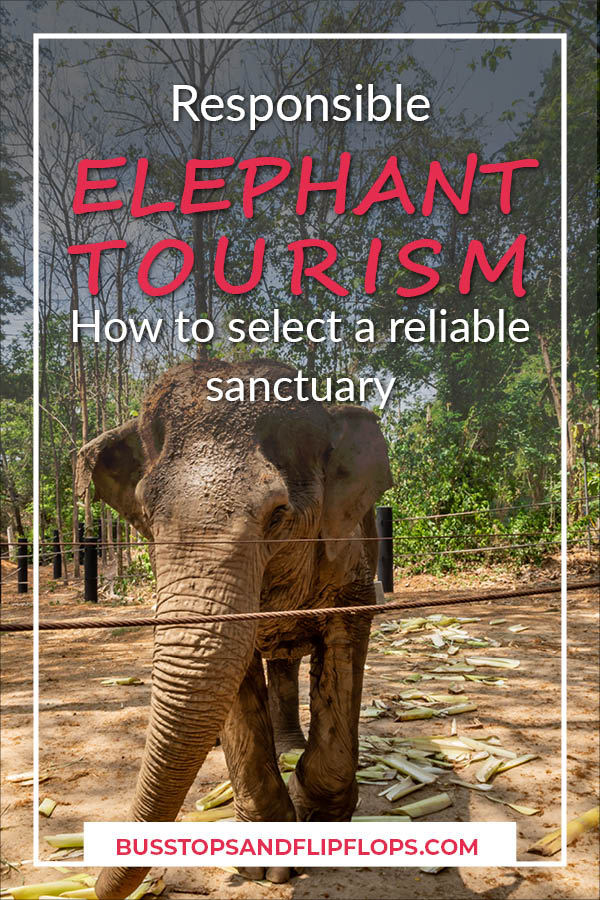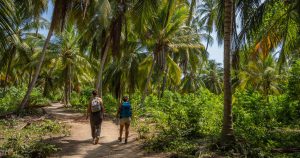Yes, you can visit a responsible elephant sanctuary in Thailand!
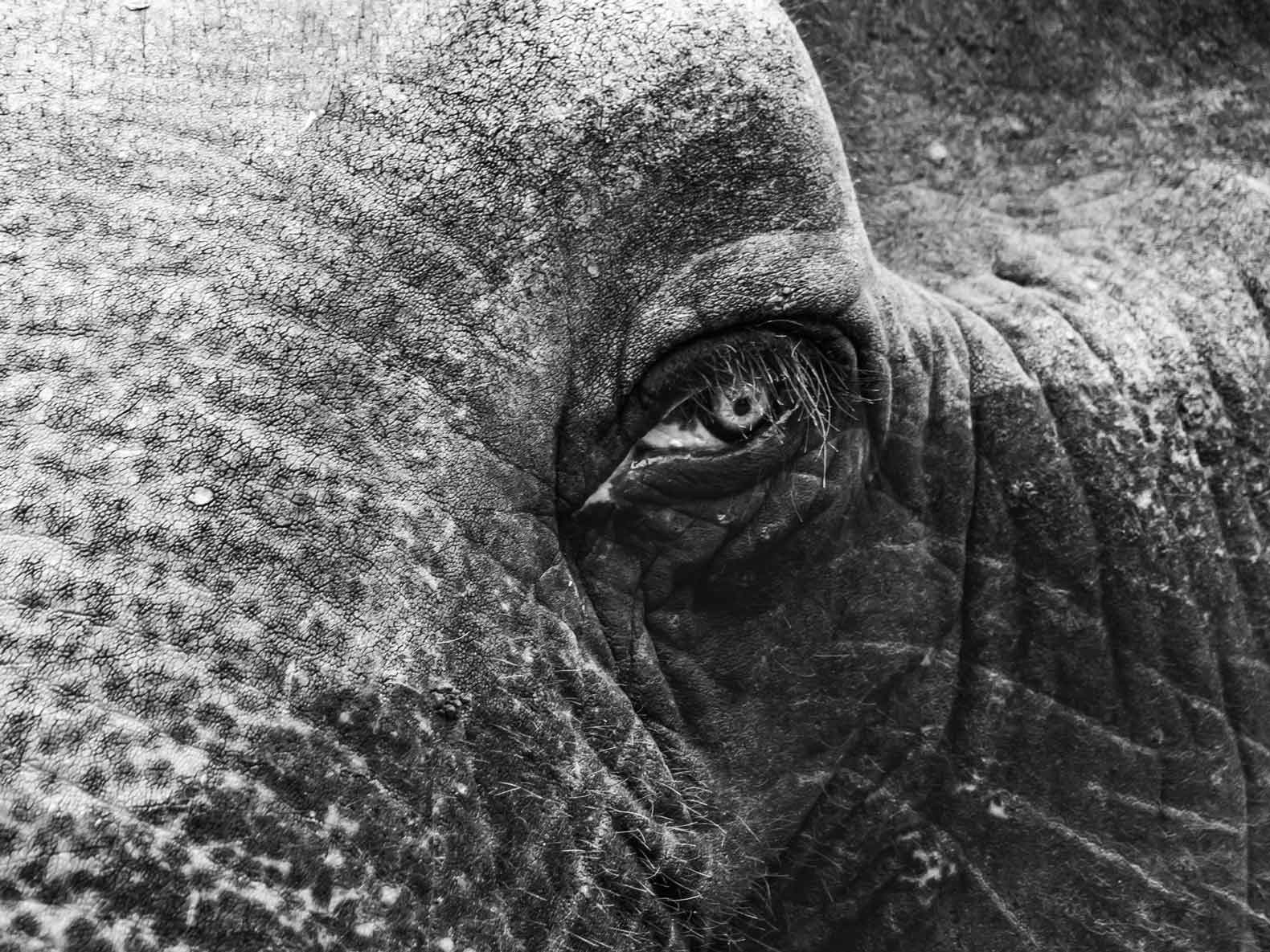
This post might contain affiliate links, which means we may receive a small commission on purchases made through these links, at no additional cost to you.
During our six week trip in Thailand one of the coolest things we did was a visit to an elephant sanctuary. However, there’s a lot of negativity around elephant tourism in Thailand (and other Southeast Asian countries for that matter). And for a good reason! Many elephants are exploited and treated badly just so his or her owner can make a quick buck off of uninformed tourists.
So in this post I’ll tell you about the history of elephants in Thailand, the negativity around elephant tourism and our experience with the sanctuary we visited. And as a bonus I’ll give you five tips about how you can practice responsible elephant tourism in Thailand.
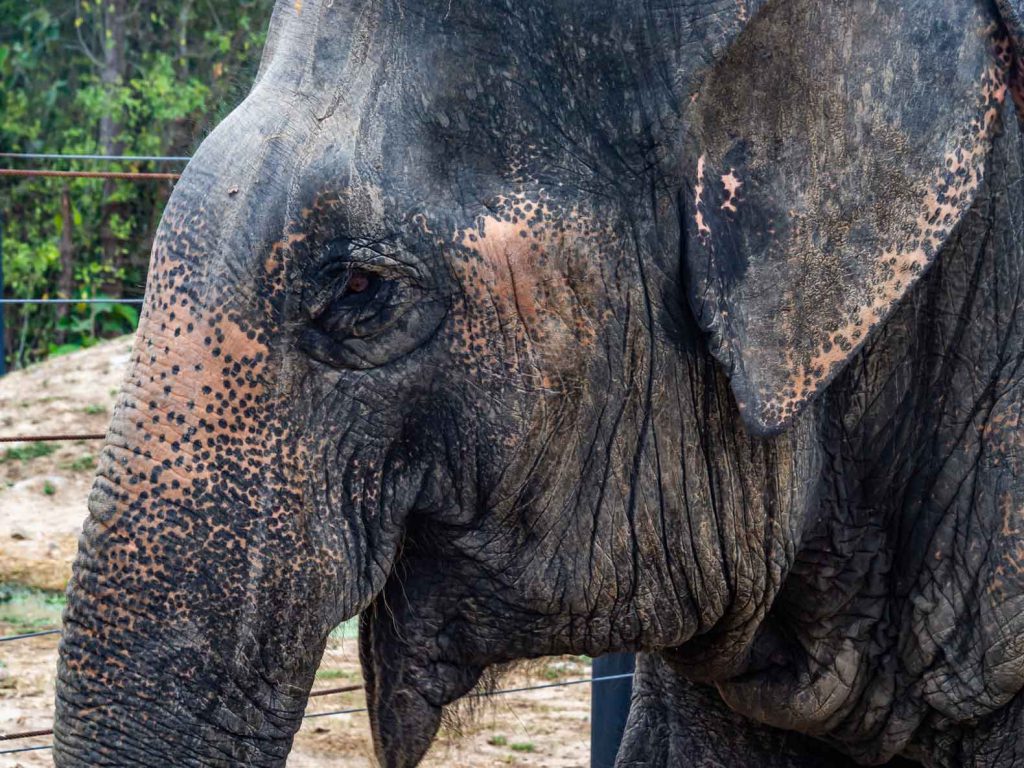
History of elephants in Thailand
The elephant we’re talking about is the Asian elephant. Don’t mistake him with its bigger brother; the African elephant. Its habitat is parts of India, China, Sri Lanka and Southeast Asia in general. While the elephants once roamed these countries in big numbers, today (because of overpopulation, poaching and, more recently, capture for use in tourism) its numbers are greatly reduced. They say that there are less than 50.000 wild elephants left in Asia, which makes it a critically endangered species!
In the past elephants in Thailand were mainly used in the logging industry. They were forced to haul big tree logs through the jungle. When a total logging ban in Thailand was implemented in 1989, mahouts (elephant trainers) had to find another job for their “unemployed” elephants. In the following decades, foreign tourism exploded in Thailand. Many of these foreigers had never seen an elephant up close (except for maybe in a zoo). So the mahouts saw an opportunity; many elephants ended up in the tourism industry.
Elephant tourism in Thailand
Elephants in Thailand are used as tourist attractions in many different ways; tourists can pay to take pictures with them, they can be ridden or the poor animals have to put on shows to entertain tourists. Many of these elephants are captured in the wild, which is horrible as there are only so few left.
What’s equally horrible is that to tame a wild elephant their spirit first needs to be broken, the so called “elephant crushing”. The crushing reportedly includes tying the elephant down in a small cage so it can’t move at all. Then, the elephant is tortured with sticks, stabbed with nails and bull hooks and deprived of food and water until the elephant is completely compliant to its owner.
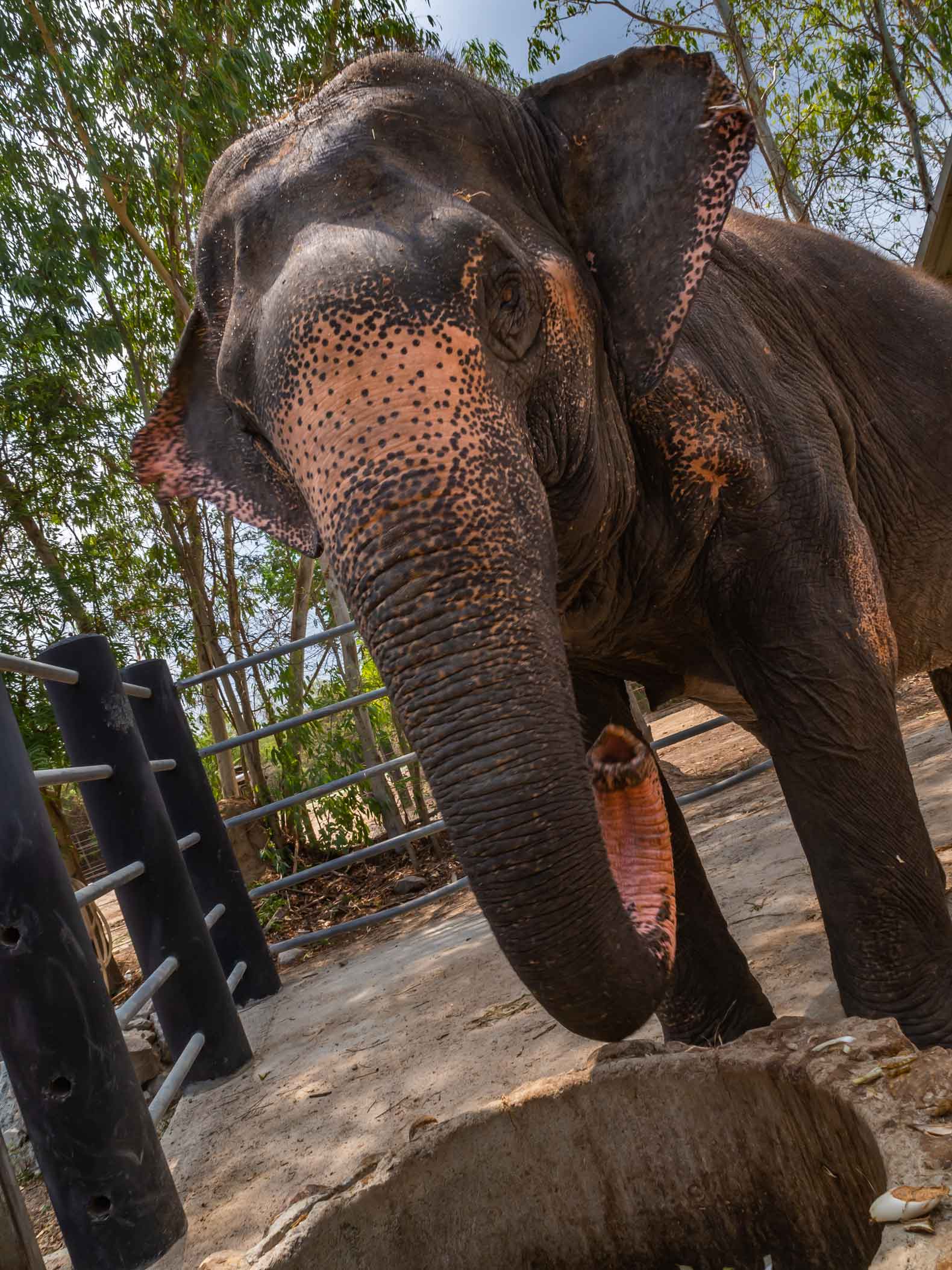
Although the capture of wild elephants and their use in tourism is illegal in Thailand, it still happens. Wild elephants are captured, mainly in Myanmar, and the import documents are falsified so that the elephant appears to be an elephant born in captivity.
The wild elephants that are captured for tourism purposes are usually just babies. In many cases the mother and other members of the herd are killed while trying to protect the young one.
The elephant sanctuary we visited
After extensive research we decided to visit The Wildlife Friends Foundation Thailand (WFFT) in Hua Hin. For tips on responsible elephant tourism, see the bottom section of this post.
WFFT, among other things, aims to rescue maltreated or neglected wild animals and house sick and disabled animals. Whenever possible they rehabilitate and release the animals back into the wild. They also educate local people about wildlife protection and animal cruelty.
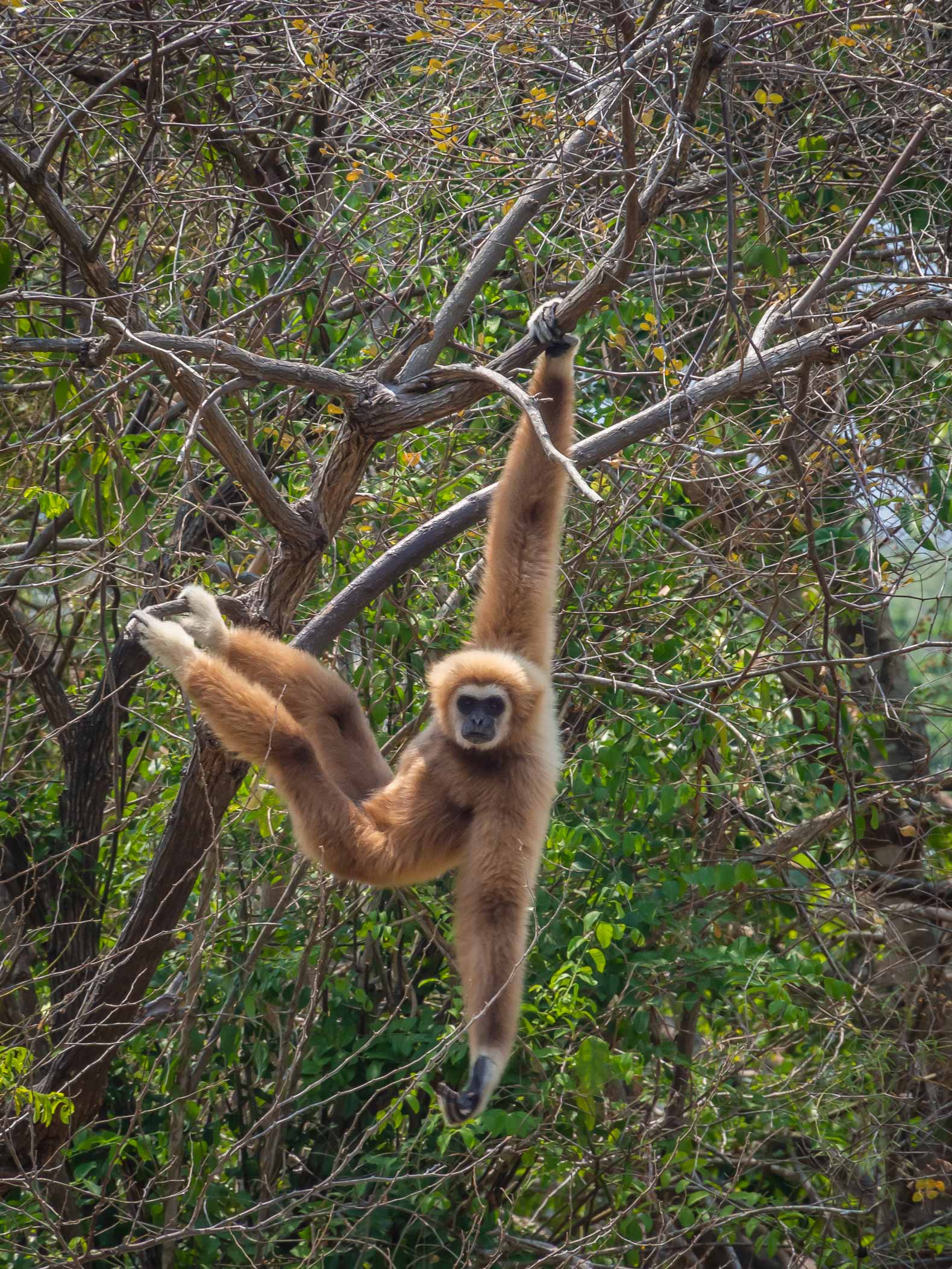
How to get to WFFT?
The best place from which to visit WFFT is Hua Hin. There are many hotels in Hua Hin for a comfortable stay. We prefer booking.com for most of our accommodations.
Hua Hin is easy to reach from Bangkok and other touristic places in Thailand. Check out how to get to Hua Hin on 12go.asia, our favorite Asian transportation site!
WFFT offers pickup from your hotel or you can arrange your own transportation.
We went for the full day program (instead of the half day program), which included:
A tour through the sanctuary
After arrival, you start off driving around the park in a very big golf cart. To me, it felt a bit like Jurassic Park, but without the T-Rex biting your head off. During the drive a tour guide explains about the park, the animals and the work the foundation does. You’ll see all kinds of animals like Gibbons, several reptiles, bears and 1(!) elephant up close. If you want to have a more “elephant filled” program you should go for the full day. The afternoon of the tour is all about the elephants. And you can’t book for just the afternoon program.
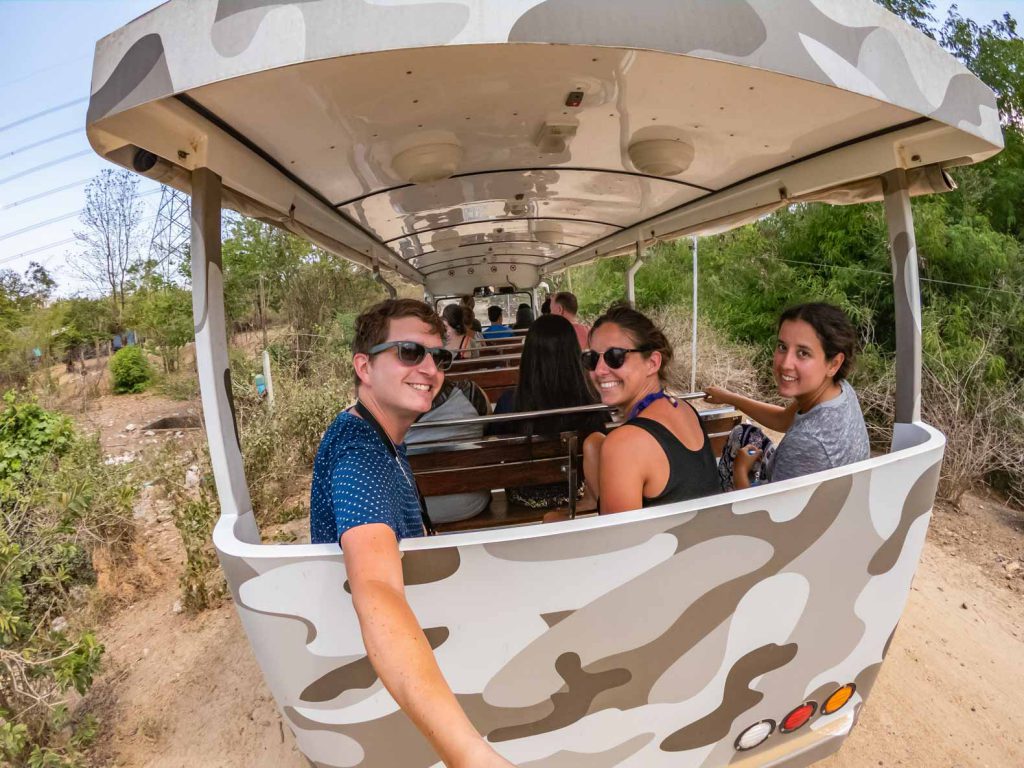
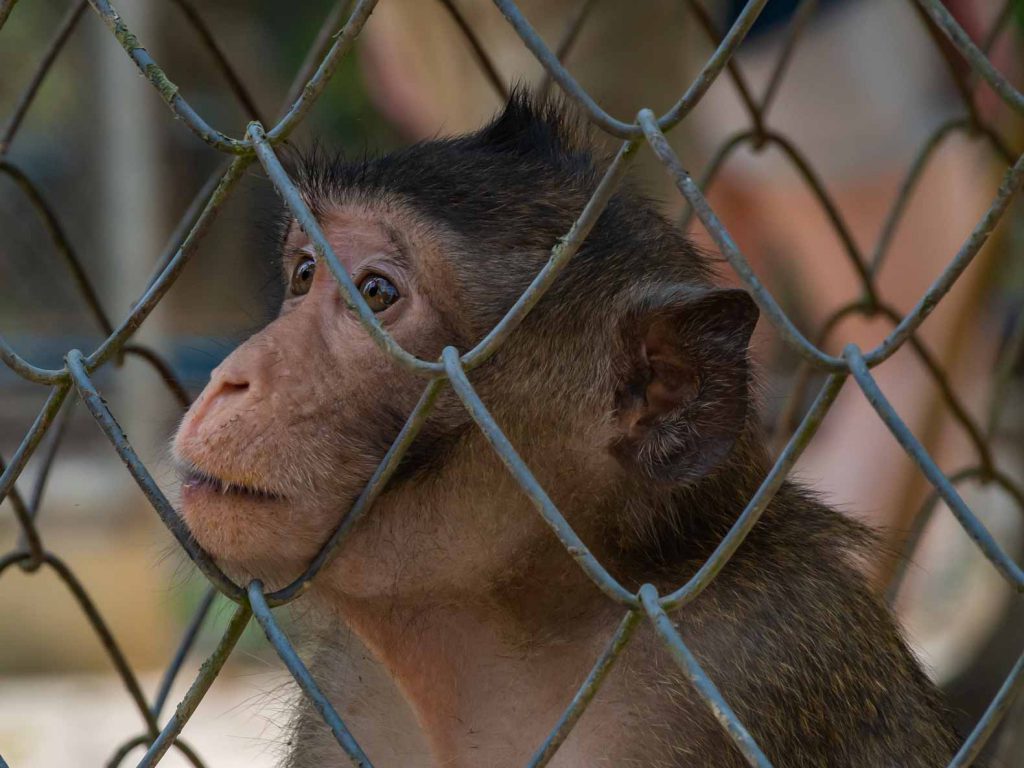
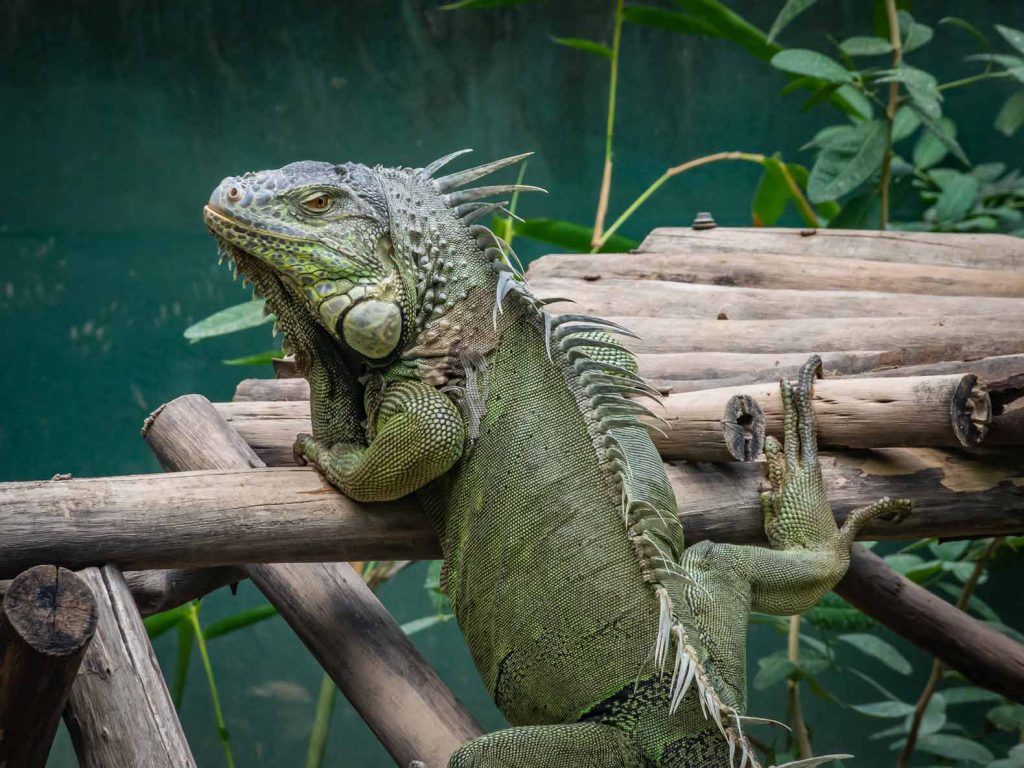
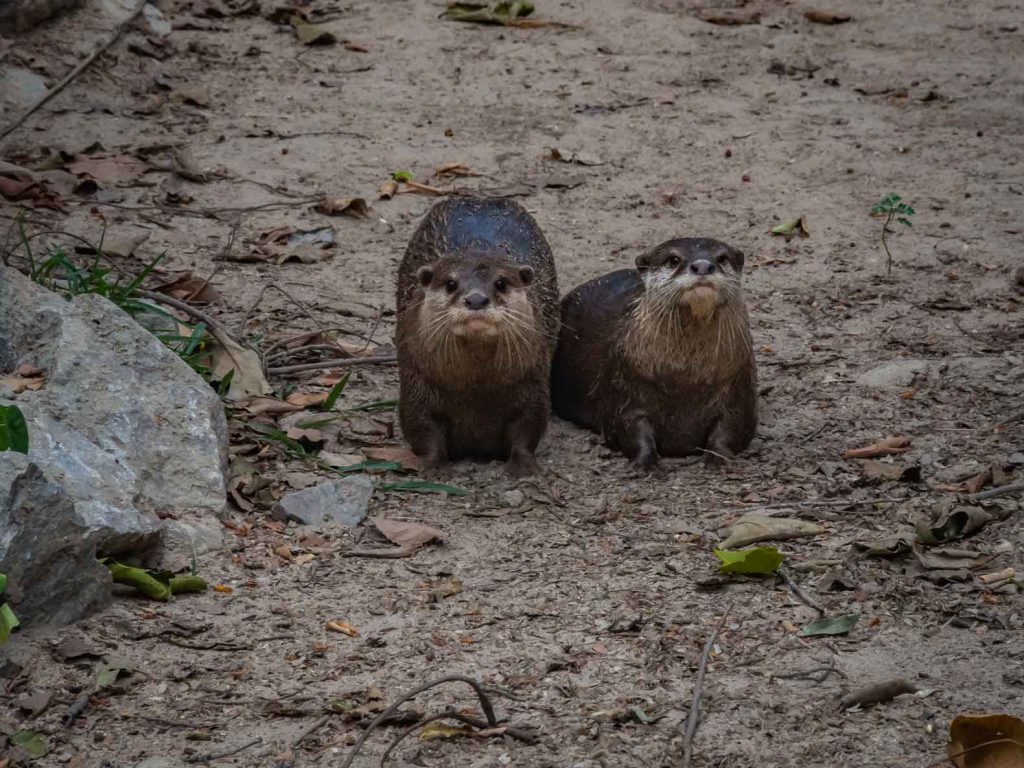
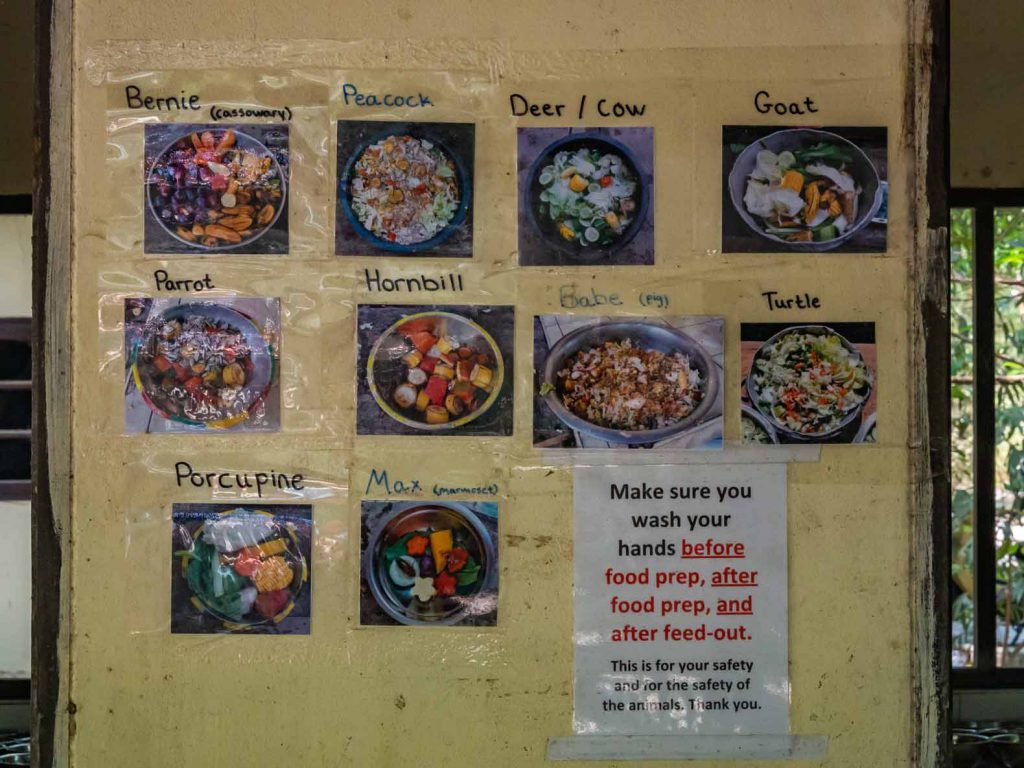
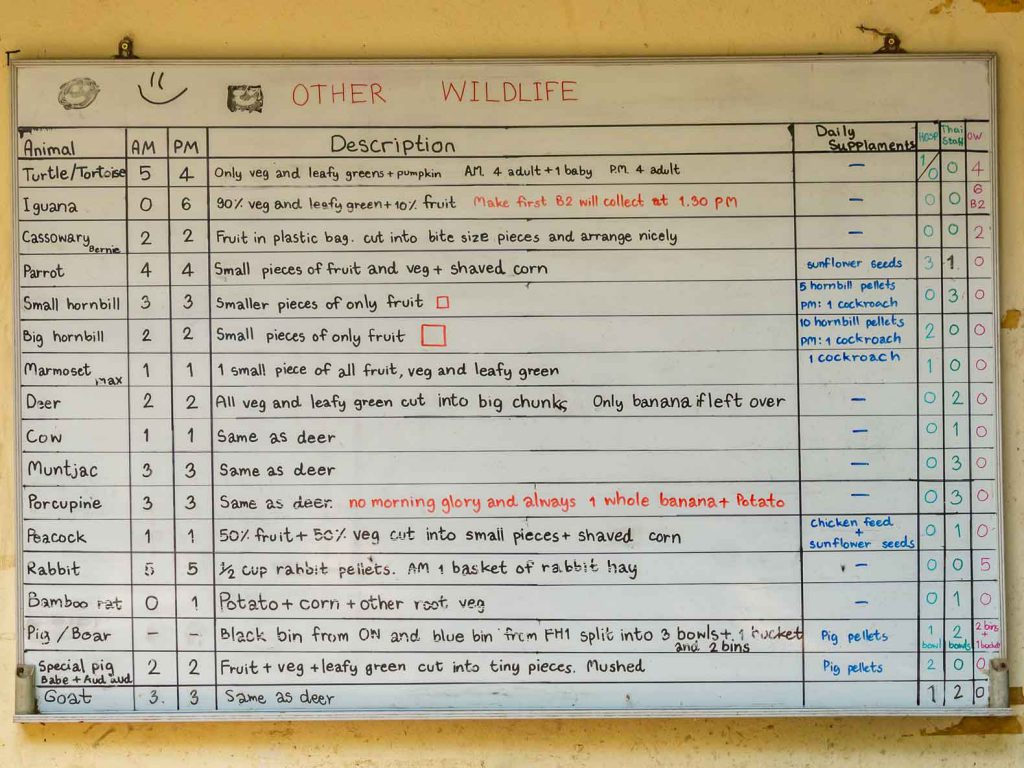
Lunch
The lunch is a buffet of Thai dishes which is really delicious. After being stuffed (it’s really a lot of food!) the people who booked the half day program left. The ‘full day’ people were once again settled in the huge golf cart and driven to the next activity.
Bathing and feeding the elephants
What came next was the highlight of our visit; feeding and bathing an elephant. The tour group was split up in smaller groups of about six people. Each group was assigned to a different elephant. We were given a bucket with fruit, a hose and a broom. The elephant would pick the fruit out of your hand with its trunk, which was really cool.
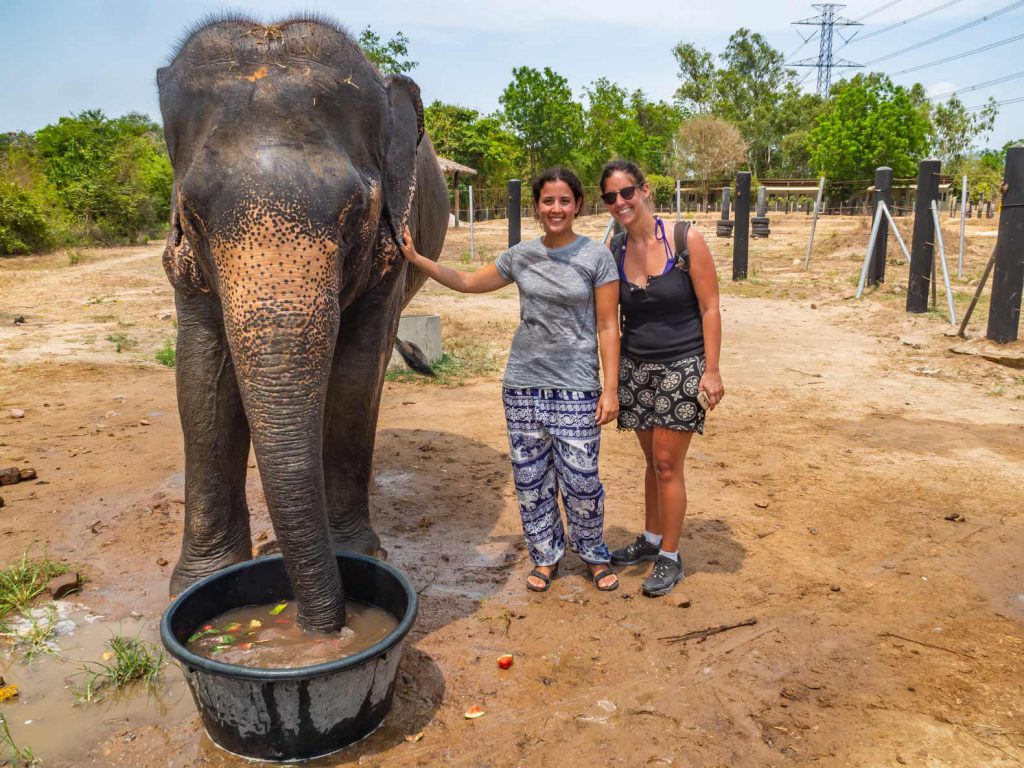
After the elephants belly was full we gave him a scrub down with a hose and a broom. The elephant seemed to enjoy it (as far as I could judge) and we certainly did! It’s really impressive to be close to an animal that big! The whole experience took about 15 minutes. It’s only these 15 minutes a day that the elephants come in direct contact with the tour company. The rest of the time they are free to roam their (big!) enclosures.
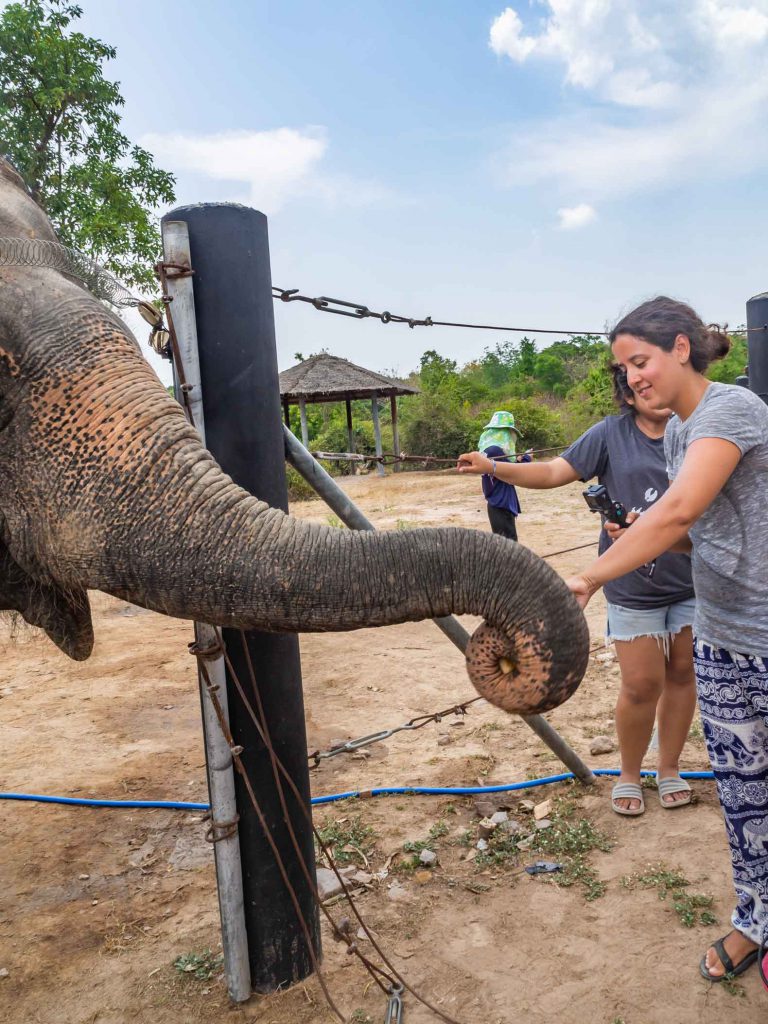
Feeding time! 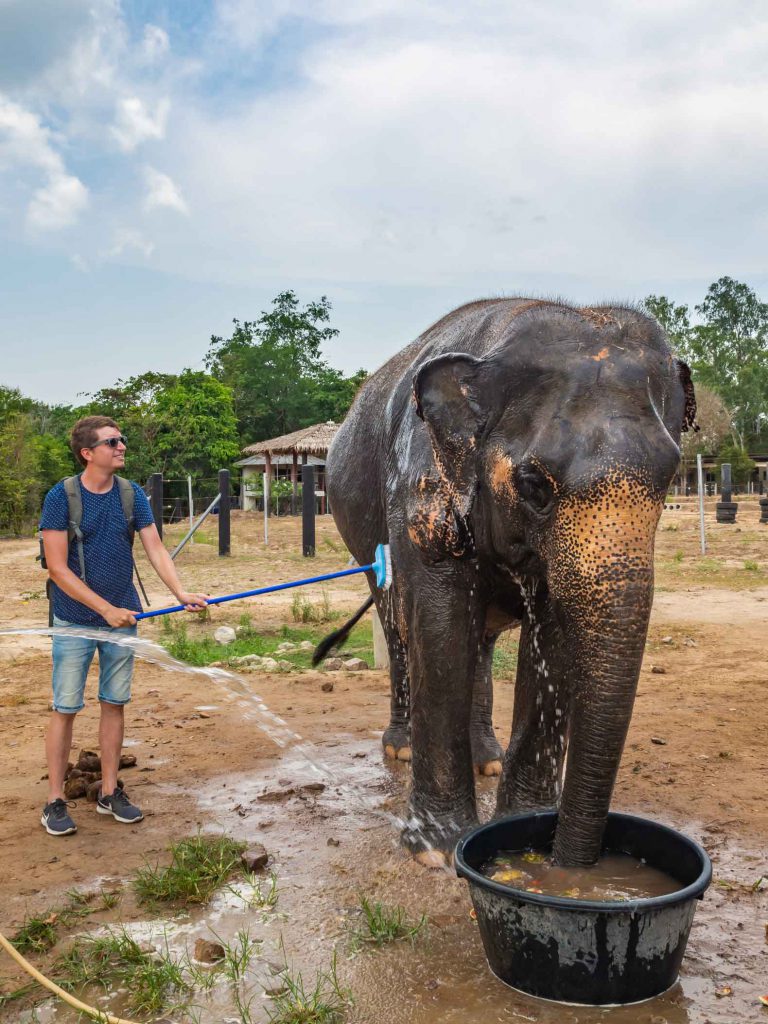
A good nice scrub down!
NOTE: As of the 1st of June 2019, WFFT has introduced their new ‘Meet, Greet and Feed Experience’. This is different from the one we had. First of all, you won’t be bathing elephants anymore. Second, you can still feed the elephants but you’ll be standing on a protected platform. The elephants can come and go as they please. In terms of animal welfare this is even better, because the elephants have the freedom to choose whether to seek contact or not.
Meeting the rest of the elephants
After the feeding and bathing they drove us past all the elephant enclosures. The guide told us some more about the different elephants, how they were treated before and the living conditions in the park. I particularly liked the part where they threw fruit in a big pond and some of the elephants jumped in to go and get it. I never saw an elephant swim before!
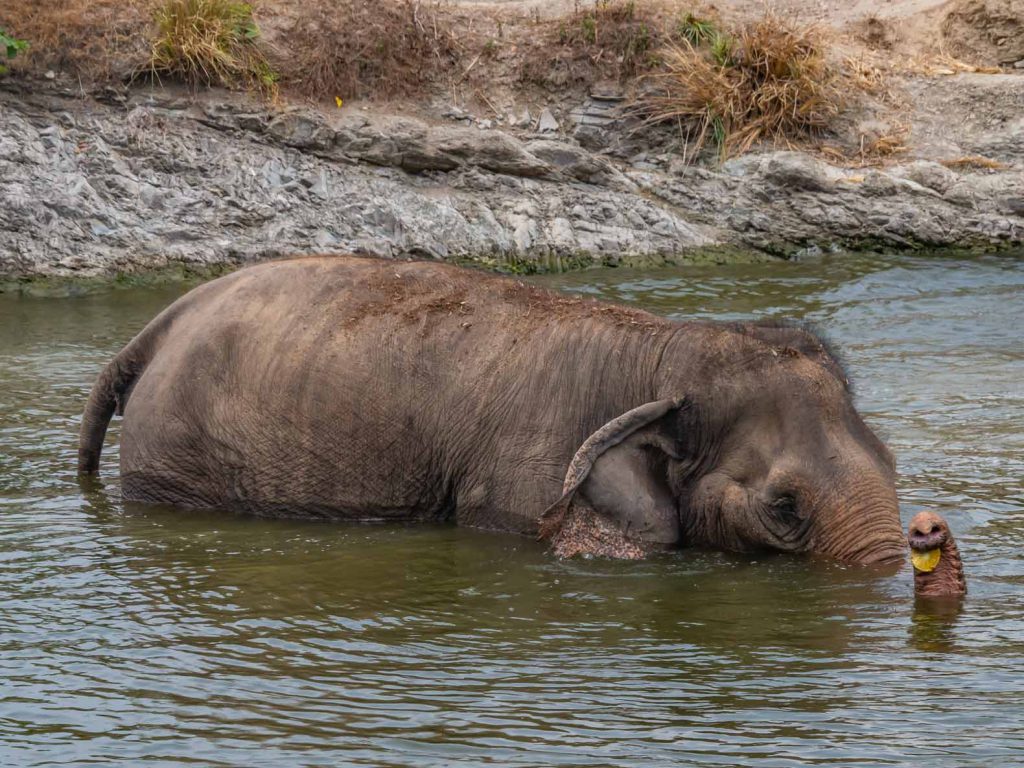
Five tips for responsible elephant tourism
So, we had a great time at WFFT and we felt that we participated in responsible elephant tourism. They really do some good work over there. But we can’t all go to WFFT. And there are many hundreds of opportunities to see and experience elephants up close. But which ones are responsible to visit and which ones should you ignore? To help you out I have some general tips for you to practice responsible elephant tourism and pick your own elephant sanctuary in Thailand!
1. Don’t ride elephants
Although elephants look big and strong, their backs are actually quite weak. Their spines aren’t strong enough to support a lot of weight coming from above. And it makes sense, right? In nature they don’t carry anything on their backs either. So imagine how heavy a mahout, a large wooden seating platform and one or two tourist must be for an elephant! Now imagine doing that for hours during the day, every day of the week. So, first tip: avoid all places where you can ride elephants!
2. Don’t pay for entertainment with elephants
As with all wild animals exploited in tourism places, you shouldn’t stimulate the use of elephants for touristic purposes. So if you see dancing, painting or posing elephants, don’t participate in the entertainment! And defenitely don’t pay for it! These animals are almost always maltreated. During the day they have to perform tricks in the scorching sun. During the night, the mahouts lock these animals up in very small cages or chain them to the floor. Can you imagine such a life of abuse and maltreatment?
3. Do your homework online.
Before you visit an elephant sanctuary in Thailand (or someplace else in Asia for that matter) do your homework! First, check out the website of the place you want to visit. Ask yourself: what are their practices and how do they treat their elephants? Second, you can check Tripadvisor about how previous visitors have experienced it; do their experiences match with what you found on the website?
TIP: Sanctuaries that take Western volunteers are usually a safe bet to visit. Malpractices are a lot more difficult to hide when there are volunteers 24/7!
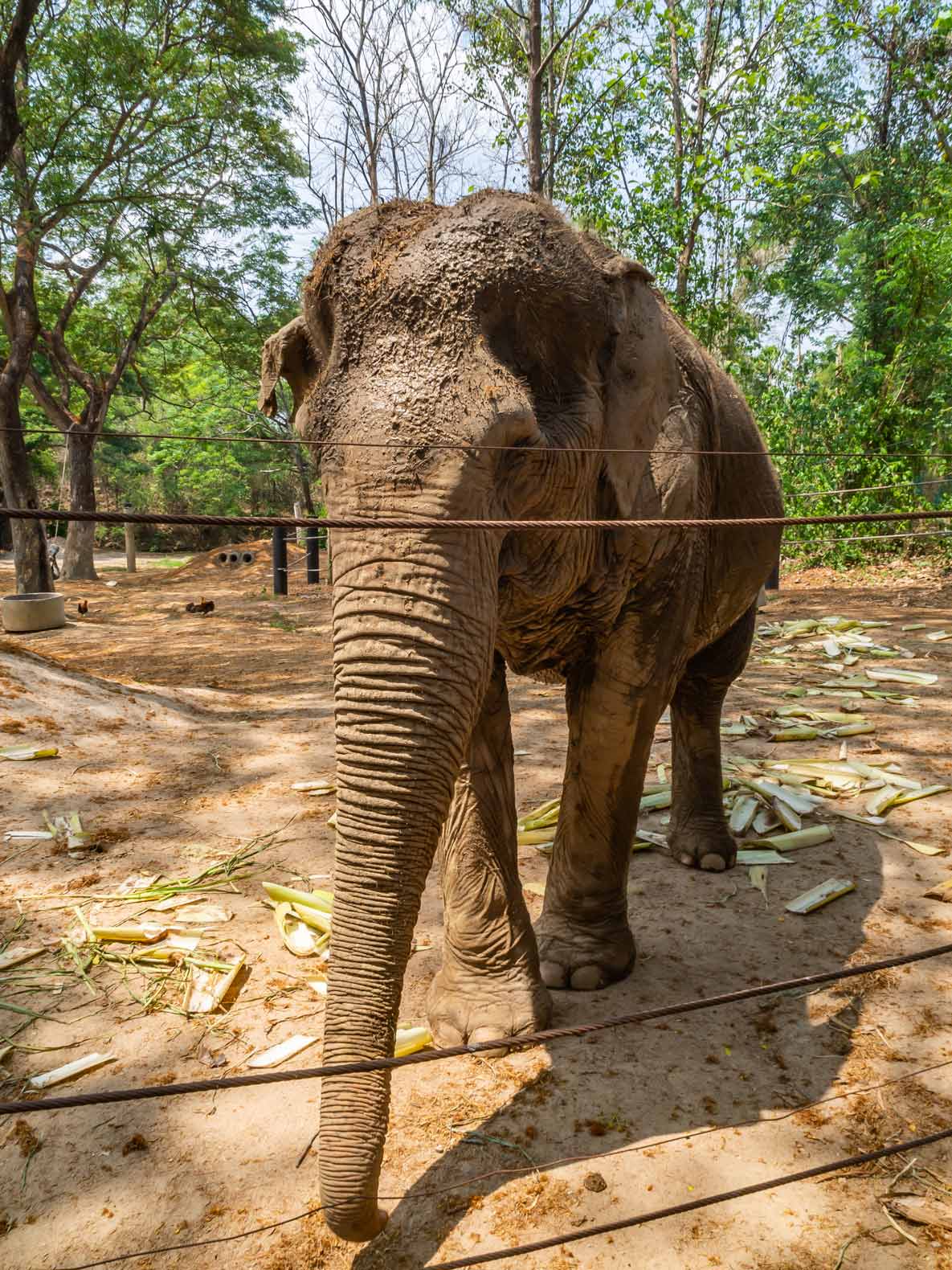
4. Don’t visit elephant sanctuaries in Thailand where the mahouts ride their elephant
This is an obvious one, right? If rule number 1 is that you shouldn’t ride an elephant, then guess what? Nobody should, even his carer! Also, skip all the so called sanctuaries where the elephants have to perform tricks for the tourists (painting, lifting tourists, dance, etc).
5. Don’t take everything sanctuaries and tourist offices advertise at face value
A lot of companies employing elephants are noticing the growing awareness of tourists concerning responsible elephant tourism. As a result many advertise as a “sanctuary”. They say that the mahoots don’t use bullhooks and the tourists can’t ride the elephants. So, if the tour company says it’s all good, it’s probably fine, right? Well, no!
In reality many of the elephants at so called “sanctuaries” still live in bad conditions and don’t get the medical care they need. Moreover, as soon as the tourists leave, the bull hooks are taken out again and the elephants are chained up to wait for the next batch of visitors. So don’t take everything they advertise at face value, stay critical and do your homework!
All in all, we had a great time at the WFFT elephant sanctuary in Thailand and a good feeling afterwards! I hope this post raises awareness about elephant tourism and helps you picking a responsible experience with elephants.
If you have any questions, tips on responsible elephant sanctuaries in Thailand or any other tips for responsible elephant tourism, leave a comment below!
Pin it for later!
Hi, my name is Geert and I’m traveling the world together with my wife Sandra. I like photography, cooking and eating good food, and exploring the outdoors.

